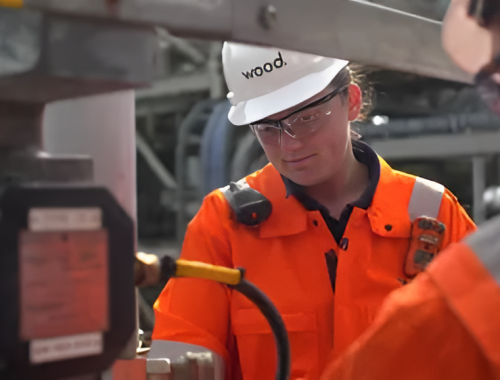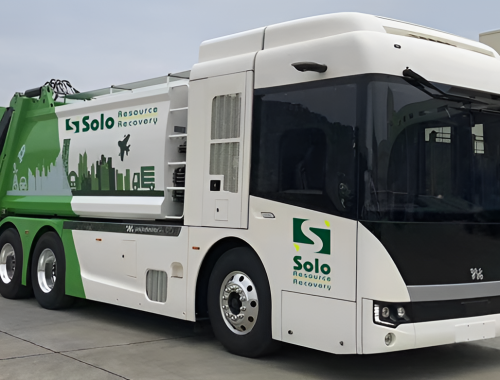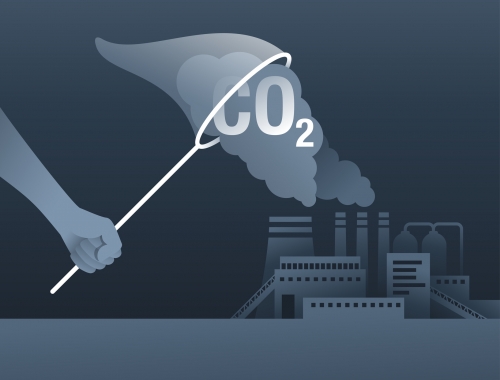CCUS is vital, but costs need to fall
SUMMARY
The role of CCUS in achieving net zero is recognised as critical, but costs need to fall and policy will play a key role in achieving that.
By Mike WeberCarbon capture utilisation and storage (CCUS’s) integral role in the energy transformation is undeniable. According to the International Energy Agency (IEA)’s landmark report Net Zero by 2050: A Roadmap for the Global Energy Sector, reaching net zero targets will be virtually impossible without harnessing carbon capture technologies.
Good news, then, that the deployment of CCUS technologies is gaining momentum. According to the Global CCS Institute, there are now at least 30 commercial-scale carbon capture projects operating. Meanwhile, about a dozen are under construction and more than 150 are under development.
Despite these encouraging signs, under the current trajectory that CCUS technologies are on, they will still fall well below the 1.29bn tonnes of capture capacity that is required by 2030 under the IEA’s Net Zero Emissions Scenario.
Scaling the sector up is critical to combating climate change. However, energy experts continue to cite CCUS as being too costly. So, what needs to happen for CCUS to become more cost-competitive?
Bringing down costs
The first obvious pathway to lowering the cost of CCUS deployment is at the policy level. Strengthening carbon pricing or carbon tax schemes will undoubtedly affect cost mechanisms for hard-to-abate sectors and make CCUS more economically attractive.
Indeed, this would have a knock-on effect in that greater adoption of CCUS would bring down the price, allowing the sector to benefit from economies of scale, develop a more robust supply chain, and encourage more cross-sector collaboration in research and development for technology innovation and advancements.
It’s important that policymakers acknowledge also that limiting the availability of CCUS would significantly raise both the cost and complexity of reaching climate goals by requiring even more reliance on technologies that are either more costly or at an earlier stage of development than CCUS. Thus, policy support for CCUS that will help drive down its cost must be at the top of the agenda.
However, perhaps the biggest opportunity to drive down the cost of deploying CCUS projects lies in promoting carbon dioxide-enhanced oil recovery (CO2-EOR) methods, since in some cases storage costs can even be negative if the CO2 is injected into and permanently stored in oil fields, which also improves production while increasing revenue from oil sales.
Moreover, this increased revenue reduces the overall project costs, and from an environmental perspective, it expands the amount of CO2 stored per dollar of investment.
The idea of “carbon negative oil” may sound like a stretch to some, but it is entirely possible. According to the IEA, today in the US between 300 kg and 600 kg of CO2 is injected during EOR processes per barrel of oil produced. Factoring in that a barrel of oil releases about 400 kg of CO2 when combusted and approximately 100k g of CO2 on average during the production, processing, and transport of the oil, there is indeed the opportunity for the full lifecycle emissions intensity of oil to be neutral or potentially “carbon negative.”
If, then at the regulatory level, policies are introduced that foster a premium to be paid for carbon negative oil, CCUS’s cost could see a noteworthy dip. This is a very real possibility, given the attractiveness of carbon negative oil, which could help reduce emissions from hard-to-abate industries such as aviation and trucking, which are heavily dependent on energy-dense, liquid fuels.
There is a caveat though that the CO2 that is injected in CO2-EOR projects must be from available CO2 that is close to oilfields. Today, this has not been occurring for the most part, with the majority of CO2 used from naturally occurring underground CO2 deposits.
In the US, over 70% of the CO2 injected for CO2-EOR is from natural sources. Thus, more leadership will be needed from the oil and gas sector to use CO2 that is close to oilfields in order for this strategy to begin making change.
Nevertheless, there are cases of this already happening. For example, the Century and Petra Nova plants in Texas are both using CO2 captured from anthropogenic sources. Here too though, care must be taken to track who claims credit for the avoided CO2 emissions, since a credit associated with storing CO2 underground can only be counted once.
Looking ahead
While no one has a crystal ball, there are a number of signs hinting that a drop in CCUS cost could be just around the corner. It’s also important to note that ruling out scaling up the technology on the basis of high costs would be overlooking its unique capabilities, its potential to decarbonise hard-to-abate sectors, and that there is ultimately a pathway to serving as a mainstream low-carbon solution.
The oil and gas sector has been leading in this space. Of the approximately 30mn t of CO2 captured today from industrial activities through large-scale CCUS facilities, close to 70% has been captured from oil and gas operations. With its ability to make use of captured CO2 through selling it to industrial facilities or to inject it and store it into oilfields to boost oil recovery, the sector has an opportunity on its plate to be a driving force in pushing CCUS into the mainstream of low-carbon technologies that can help us reach net-zero.








